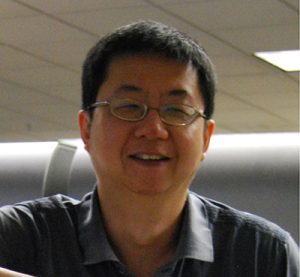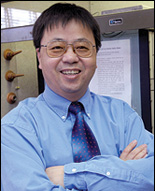“What is the most ideal [solid-electrolyte interphase] SEI or interphase that would enable the next generation of the battery chemistries?”
It was a question that had been lingering in the minds of Kang Xu, fellow of US Army Research Laboratory and team leader; Chunsheng Wang, University of Maryland chemical and biomolecular engineering department professor, as well as one of the most cited researchers of 2018; and Ying Shirley Meng, University of California, San Diego nanoengineering professor, fellow of The Electrochemical Society, and associate director of the International Battery Association.
Together, the trio set out to pursue this question, resulting in the publication of their paper “Perspective—Fluorinating Interphases.”
The team of researchers decided to focus their attention on the role of fluorine in the interphase, as it had historically proved to be controversial while also promising.
“The interphase is complicated. People don’t get a straight answer from their individual research projects,” Xu, lead author of ‘Perspective—Fluorinating Interphases'” explained.
He compared it to a group of blind men touching an elephant to figure out what it looks like.
“They all give you a different view from their spatial angle of touching. This is exactly what happens with the interphase chemistry,” said Xu.
As a result, researchers have called fluorine an excellent interphase, while others have equally called it restrictive and inefficient, causing fluorine to be at the center of much controversy.
However, the team of researchers strongly believed fluorine could be a key element in the future of battery chemistry. It was a matter of further studying how the element exists in the SEI and figuring out how to best engineer an interphase to be fluorinated in an optimum manner.
“We found the answers are related to how you distribute the fluorine in the interphase. We established that extra benefits arise more often than not when fluorine source in the electrolytes increases,” said Wang. “That is, as long as you can do the fluorine chemistry well – you can distribute the fluorine in very fine nanoscale distribution – you always improve the stability of the battery. This is not actually reflected in a single paper. The general trend has been reflected in recent years by a huge trend of different works.”
That is why Xu and his colleagues decided to write the perspective paper to call the attention of the community.
“We don’t have all the answers,” said Meng. “We need combined efforts from all the people in the community, not only material scientists but also people who are good at in-situ characterization, computer simulation, you can name it. It will take all of us working together to figure out what is the best way to configure the fluorine in the interphase.”
Xu says what they do know is that fluorine interlocks well, but it is not yet totally clear how the fluorine exists in the interphase.
“The purpose of this paper is to raise people’s attention, to ask people for more resource to focus their attention on this topic, which can solve the problem that we cannot solve single-handedly.”
The paper “Perspective—Fluorinating Interphases” is open access and available to read for free on the Journal of The Electrochemical Society.
Stop by the ECS blog: Stay up to date on the latest battery news here.





